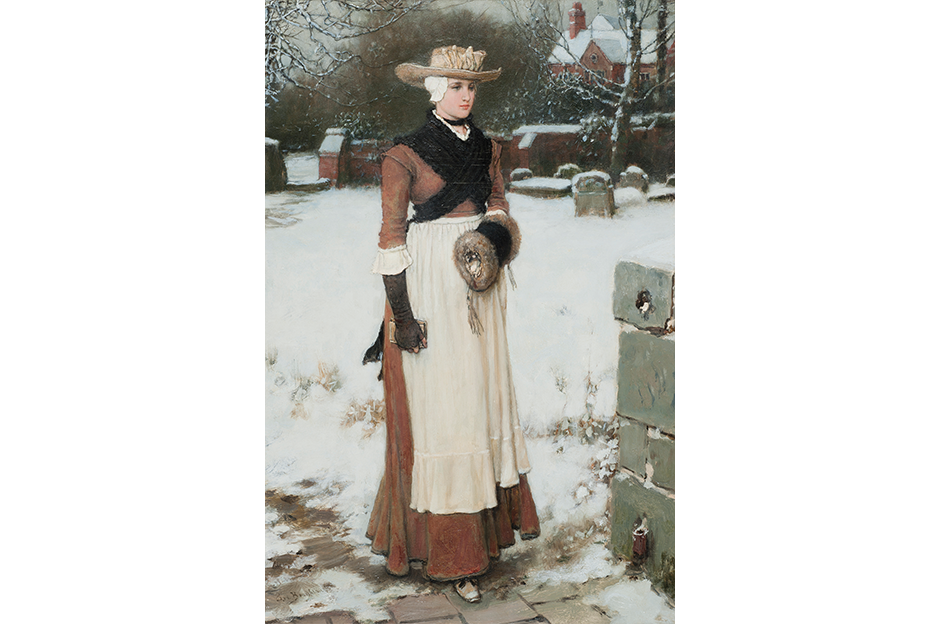Visit the Museum and explore Puritan Maiden, the imaginary vision of a 1630s colonist painted by George H. Boughton around 1876. This painting exemplifies why the artist became renowned for originating Puritan Revival genre painting. Here, an upright, young Puritan woman walks to a religious service through a cold, desolate churchyard with a book of prayers in one hand and a fur muff in the other.
The Puritan Revival began in part with Abraham Lincoln’s proclamation of Thanksgiving as a national holiday during the height of the American Civil War. This artistic and cultural phenomenon is reflected in a national nostalgia for a perceived simpler, more morally certain era, removed from the confusing transformations of the modern age. When Boughton painted Puritan Maiden, the United States was still recovering from the devastation of the Civil War. Americans were reeling from societal upheavals including the release of more than three million African-Americans from slavery, rapid industrialization, massive immigration, explosive urbanization, the shifting role of middle-class women, and scientific discoveries that challenged Christian beliefs.
Boughton’s message of steady moral fortitude provided reassurance to his 19th-century audience. In an imagined rural, pre-industrial setting, Boughton’s church-going, Anglo-Saxon maiden conformed to established societal expectations and offered his contemporaries solace from the cultural anxieties of his era.
Puritan Maiden is currently on view in Gallery 2-West.



